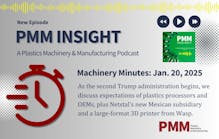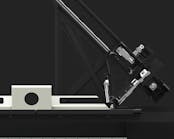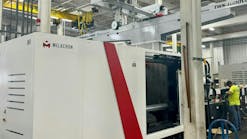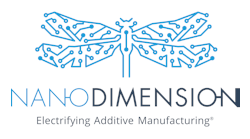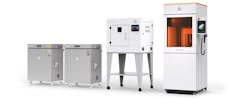By Karen Hanna
Just a few years ago, Justin Slaughter was among scores of people in his community watching their coal-mining careers come to an end.
He went through motions familiar to a lot of workers who have lost their jobs — trudging to work, seeing friends one day before they were gone the next, dreading each new round of news. Where he wound up next — working as an engineering technician for sister plastics processor companies Dustless Technologies and Merit3D — surprised even him.
“When I signed on at the coal mines, I lived my life relatively conservatively, just knowing that they were kind of volatile,” said Slaughter, who spent more than 20 years Forworking for the mines that once dominated the economy in his home county of Carbon — named after the coal found there. “To say that I would be doing manufacturing, that probably never crossed my mind.”
Like his former colleagues, Slaughter, of Price, Utah, dedicated his career to an industry that’s now in transition, with the U.S. Environmental Protection Agency ordering the closures of certain coal-fired power plants. In 2020, the mines employed 891 people in Carbon County, according to a study by the Kem C. Gardner Policy Institute of the University of Utah, more than half of those positions will be eliminated by 2060.
At 3D printing company Merit3D, founder Spencer Loveless is looking to additive manufacturing to provide opportunities to people in his community, like Slaughter, who have been affected by mining’s contraction. Begun in 2020 to produce plastic components for vacuum maker Dustless Technologies, Merit3D now employs about 20 people and has expanded into contract manufacturing, using about 60 3D printers.
“I was born and raised here, but I think it has great potential to really change an economy,” said Loveless, who turned to 3D printing when Dustless Technologies — a company started by his parents — experienced problems sourcing parts during the pandemic.
While a cascade of issues, including factory shutdowns in Asia and logjams at U.S. ports, prevented manufacturers like Dustless Technologies from getting parts, Slaughter was experiencing problems of his own.
The recipient of associate degrees in 1994 and 1996, he’d been trained as a draftsman/surveyor and had worked at one coal mine for 16 years, then another for seven.
“And I basically rode that train until it finally came to a screeching halt in 2020. That coal mine shut down; I was offered the ultimatum of either I didn't have a job anymore, or I could transfer to another coal mine, which was a sister coal mine owned by the same company,” he said. “But the commute would be an hour and a half each way.”
Instead, he waited a bit, and landed a job at another mine a little closer — a commute of 1 hour each way for work he knew wasn’t going to last.
He’d been conditioned for a while to believe the end was coming.
“I guess it was 2019, right around Labor Day, when the coal mine that I had been at for 16 years started just kind of systematically shutting down. We could all tell that the writing was on the wall [that] we probably wouldn't be here for much longer. Morale started to go downhill,” he said. “Everybody kind of had that feeling of impending doom, and nobody really wanted to talk about it.”
In 2020, Slaughter reached out to a local university for help planning his next steps.
“I just decided, ‘Hey, if I’m ever going to make a change in my life, it’s going to be right now,’ ” said Slaughter, who learned that he was eligible for job-training programs through the Coronavirus Aid, Relief, and Economic Security Act — also known as the CARES Act.
A Utah State University (USU) Eastern representative put him on the path that would lead to Merit3D.
“He says, ‘Have you ever heard of additive manufacturing?’” Slaughter recalled.
Slaughter hadn’t, but he had an open mind. After a while, he was all in, quitting his coal-mining job to learn all he could about additive manufacturing. Originally trained to use AutoCAD, he’s since converted to SolidWorks, a solid modeling computer-aided design and computer-aided engineering application.
The detailed work of 3D printing has intrigued him.
“One of the classes was taught on site at Dustless Technologies and Merit3D. It was the main class teaching us about the technology,” he said.
Loveless, who would go on to hire Slaughter and a couple other students, was one of the instructors.
For his companies to find workers, he recognizes he has to play a role.
“We have quite a few programs that we’re working on and are working with other companies to put in place” to expand the worker pool, Loveless said.
With the goal of bridging the gap between the skills the current workforce has and the ones that his companies need, Loveless is working with the state of Utah, as well as area schools, including USU, and other entities.
Slaughter worked first for Dustless Technologies, then moved on to Merit3D, housed in a facility next door, where he manages the flow of 3D printing work orders. He loves seeing how an idea can evolve into a part — often within days.
With his workplace now just a few minutes from home, he’s also relishing another benefit — he can go home for lunch. He’s also able to spend more time with his two daughters; one works with him at Merit3D.
He marvels at the new vibe he’s encountered at Merit3D, since coming from the mines.
“I saw people getting shipped out here and there, people quitting, people going on to find other jobs, versus this company, where everybody’s pretty upbeat when they’re coming into work; everybody brings good ideas, good positivity to the meetings. Not to say we don’t have our growing pains and whatever, but the whole environment is so much better. It’s a happy place to work. It’s up to us to take what’s available and make the best of it and grow this business,” he said.
He’s aware that Loveless has talked about the potential of creating jobs for all the area’s displaced miners like him. It’s a big goal, but Slaughter won’t call it a stretch.
Just days before his 49th birthday, on the cusp of his second anniversary of employment at Loveless’ companies, Slaughter said he’s grateful he made the decision to pursue a new path.
3D printing has a lot of potential, he and Loveless say.
“It’s opened up a whole new world for me, and I love the technology,” Slaughter said. “I love the work atmosphere. It’s so much better to be involved with something that’s up and coming rather than being in an industry that’s going downhill.”
Karen Hanna, senior staff reporter
Karen Hanna | Senior Staff Reporter
Senior Staff Reporter Karen Hanna covers injection molding, molds and tooling, processors, workforce and other topics, and writes features including In Other Words and Problem Solved for Plastics Machinery & Manufacturing, Plastics Recycling and The Journal of Blow Molding. She has more than 15 years of experience in daily and magazine journalism.




